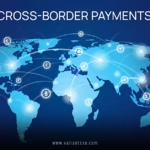The Future of Online-Only Banks in the U.S. is not just a trend—it’s a seismic shift in how Americans manage their money. Picture this: no more long lines at the bank, no stuffy tellers, and no outdated systems that make you feel like you’re stuck in the 90s. Online-only banks, or neobanks, are rewriting the rules of banking by offering sleek, mobile-first experiences that cater to our fast-paced, tech-driven lives. But what’s driving this change, and where is it headed? Let’s dive into the world of digital banking and explore why the future of online-only banks in the U.S. is so exciting—and maybe a little uncertain.
What Are Online-Only Banks, and Why Do They Matter?
Imagine a bank that lives entirely in your pocket. No brick-and-mortar branches, no ATMs you have to hunt down, just a slick app on your smartphone that handles everything from checking your balance to depositing checks with a snap of your camera. That’s the essence of online-only banks. These digital-first institutions, like Chime, SoFi, and Ally, are built to operate without physical locations, relying on technology to deliver banking services.
Why does this matter? For starters, online-only banks are shaking up a banking industry that’s been slow to innovate. Traditional banks, with their hefty overhead costs and legacy systems, often charge high fees and offer lackluster interest rates. Online-only banks flip this model on its head. By cutting out physical branches, they save money and pass those savings onto customers through lower fees, higher savings rates, and innovative tools. The future of online-only banks in the U.S. hinges on their ability to keep delivering these perks while staying ahead of the competition.
The Rise of Neobanks: A Brief History
The seeds of online-only banking were planted in the early 2000s when internet banking started gaining traction. But it wasn’t until the smartphone boom and the rise of fintech that neobanks truly took off. By 2025, over 216 million Americans are expected to use digital banking services, with mobile apps leading the charge. The future of online-only banks in the U.S. was fueled by a perfect storm: widespread smartphone adoption, frustration with traditional banks, and a generation of tech-savvy consumers demanding better options.
Key Trends Shaping the Future of Online-Only Banks in the U.S.
The future of online-only banks in the U.S. is being shaped by a whirlwind of technological and cultural shifts. Let’s break down the biggest trends driving this evolution and what they mean for you.
AI and Automation: The Brains Behind the Operation
Artificial intelligence (AI) isn’t just for sci-fi movies anymore—it’s the backbone of modern neobanks. Imagine having a financial advisor in your pocket, analyzing your spending habits and nudging you to save more. That’s what AI-powered tools in apps like Chime and Varo are doing. These banks use AI to offer personalized budgeting advice, predict cash flow, and even detect fraud before it becomes a problem.
Automation is another game-changer. Routine tasks like transferring money or paying bills are now seamless, saving you time and hassle. In 2025, expect AI to get even smarter, with chatbots handling complex inquiries and algorithms offering tailored investment advice. The future of online-only banks in the U.S. will rely heavily on these technologies to stay competitive and keep customers happy.
Mobile-First Banking: Convenience at Your Fingertips
Let’s face it: most of us are glued to our phones. It’s no surprise that mobile banking has surged, with 55% of Americans preferring to manage their accounts via apps. Online-only banks are designed with this in mind, offering intuitive interfaces that make banking as easy as ordering takeout. Features like mobile check deposits, instant transfers, and real-time notifications are now standard, and neobanks are constantly raising the bar.
What’s next? The future of online-only banks in the U.S. will see even more mobile-first innovation. Think augmented reality for visualizing financial goals or voice-activated commands for hands-free banking. The goal is to make managing your money so effortless you barely notice you’re doing it.
Enhanced Security: Keeping Your Money Safe
If you’re worried about trusting an app with your life savings, you’re not alone. Cybersecurity is a top concern, with 80% of mobile banking users worried about data breaches. The good news? Online-only banks are doubling down on security. Advanced encryption, biometric authentication (like fingerprint or facial recognition), and AI-driven fraud detection are becoming standard.
In the future, expect quantum-resistant cryptography to protect against emerging threats and neurotechnology-based authentication (yes, brainwave patterns!) to make hacking nearly impossible. The future of online-only banks in the U.S. depends on building trust through ironclad security measures.
Financial Inclusion: Banking for Everyone
One of the most exciting aspects of online-only banks is their potential to serve the unbanked and underbanked. In the U.S., 6% of households lack a bank account, often due to high fees or lack of access to branches. Neobanks are changing this by offering low-cost accounts and minimal requirements, making banking accessible to everyone from gig workers to rural communities.
By leveraging technology, these banks can reach underserved populations with affordable loans, savings accounts, and financial education tools. The future of online-only banks in the U.S. will likely see them playing a bigger role in closing the financial inclusion gap, especially as they expand into developing markets.
Challenges Facing Online-Only Banks in the U.S.
The road ahead isn’t all smooth sailing. While online-only banks are gaining ground, they face some serious hurdles. Let’s explore the challenges that could shape the future of online-only banks in the U.S.
Competition from Traditional Banks
Traditional banks aren’t sitting idly by. Giants like Bank of America and JPMorgan Chase are investing heavily in digital platforms to compete with neobanks. For example, JPMorgan Chase plans to launch a digital bank in Germany by 2025, signaling a global push toward digital offerings. These banks have deep pockets, established customer bases, and physical branches that some consumers still value.
How can neobanks compete? By staying nimble and innovative. The future of online-only banks in the U.S. will depend on their ability to offer unique features—like zero-fee accounts or high-yield savings—that traditional banks struggle to match.
Regulatory Hurdles
The banking industry is heavily regulated, and neobanks are no exception. New rules around cybersecurity, data privacy, and incident reporting are putting pressure on digital banks to comply without sacrificing their lean operations. For instance, the Consumer Financial Protection Bureau (CFPB) has raised concerns about AI-driven tools complying with consumer protection laws.
Navigating this regulatory maze will be critical. The future of online-only banks in the U.S. will hinge on their ability to balance innovation with compliance, ensuring they remain trustworthy in the eyes of both customers and regulators.
Customer Trust and Retention
While 96% of consumers rate their digital banking experience as good or excellent, only 8% consider online-only banks their primary bank. Why? Many still value the personal touch of in-person banking for complex tasks like opening accounts or getting financial advice. Building trust is crucial, especially as neobanks target younger, tech-savvy customers who are quick to switch providers if their needs aren’t met.
To win loyalty, neobanks must focus on personalized experiences and stellar customer service. The future of online-only banks in the U.S. will be shaped by their ability to make customers feel valued, not just another user on an app.
Opportunities for Growth in the Digital Banking Space
Despite the challenges, the future of online-only banks in the U.S. is brimming with opportunities. Here’s how neobanks can seize the moment.
Embedded Finance: Banking Where You Shop
Imagine buying a couch online and getting a financing option right at checkout. That’s embedded finance—integrating banking services into non-financial platforms like e-commerce sites or ride-sharing apps. Banking-as-a-Service (BaaS) allows neobanks to partner with retailers, offering loans, payments, or insurance seamlessly.
This trend is set to explode, with digital wallets expected to become the top online payment method by 2026. The future of online-only banks in the U.S. will see them embedding financial services into everyday activities, making banking as natural as scrolling through social media.
Partnerships with Fintechs
Collaboration is key in the fintech world. Neobanks are teaming up with tech companies to offer innovative features, like Venmo’s integration with payment platforms or SoFi’s investment tools. These partnerships allow online-only banks to expand their offerings without building everything from scratch.
By 2030, expect more neobanks to partner with AI startups, blockchain providers, and even gaming platforms to create unique financial products. The future of online-only banks in the U.S. will be defined by these strategic alliances, helping them stay ahead in a crowded market.
Personalization: Making Banking Feel Personal
In a world of algorithms, personalization is the secret sauce. Neobanks are using data analytics to tailor services to individual needs, whether it’s suggesting a savings plan or alerting you to overspending. By 2030, generative AI could take this to the next level, offering hyper-personalized financial advice that feels like a conversation with a trusted friend.
The future of online-only banks in the U.S. lies in their ability to blend technology with empathy, creating experiences that resonate with customers on a human level.
The Role of Consumer Behavior in Shaping the Future
Consumers are the heartbeat of the banking industry, and their preferences are driving the future of online-only banks in the U.S. Millennials and Gen Z, who make up the bulk of digital banking users, prioritize convenience, low fees, and transparency. Meanwhile, older generations still value physical branches for certain tasks.
To stay relevant, neobanks must cater to these diverse needs. Offering hybrid solutions—like virtual consultations with financial advisors—could bridge the gap between digital and traditional banking. The future of online-only banks in the U.S. will depend on their ability to adapt to evolving consumer expectations while staying true to their digital roots.
Conclusion: The Bright (and Bold) Future of Online-Only Banks in the U.S.
The future of online-only banks in the U.S. is a thrilling mix of opportunity and challenge. These digital pioneers are redefining banking with mobile-first platforms, AI-driven tools, and a commitment to financial inclusion. But they’ll need to navigate fierce competition, regulatory pressures, and the quest for customer trust to stay ahead. By embracing innovation, forging smart partnerships, and putting customers first, neobanks can carve out a lasting place in the financial landscape. So, whether you’re a tech-savvy millennial or just curious about the future, now’s the time to explore what online-only banks have in store. The future is digital—jump in and see where it takes you!
FAQs About the Future of Online-Only Banks in the U.S.
1. What makes online-only banks different from traditional banks?
Online-only banks operate entirely through digital platforms, with no physical branches. They offer lower fees, higher interest rates, and mobile-first features, making them a compelling choice for tech-savvy consumers exploring the future of online-only banks in the U.S.
2. Are online-only banks safe to use?
Yes, as long as they’re FDIC-insured, your deposits are protected up to $250,000 per account type. Neobanks use advanced encryption and AI-driven security to ensure safety, a key factor in the future of online-only banks in the U.S.
3. How will AI shape the future of online-only banks in the U.S.?
AI will enhance personalization, fraud detection, and customer service through smart chatbots and predictive tools. It’s set to make banking more intuitive and efficient, driving the future of online-only banks in the U.S. forward.
4. Can online-only banks replace traditional banks entirely?
While they’re gaining popularity, many consumers still value physical branches for certain services. The future of online-only banks in the U.S. will likely involve coexisting with traditional banks, offering complementary digital solutions.
5. What should I consider before switching to an online-only bank?
Evaluate fees, interest rates, app usability, and customer support. Ensure the bank is FDIC-insured and aligns with your financial needs. Researching these factors is crucial when considering the future of online-only banks in the U.S.
For More Updates !! : valiantcxo.com


